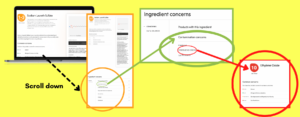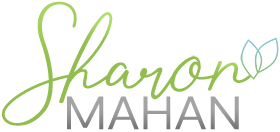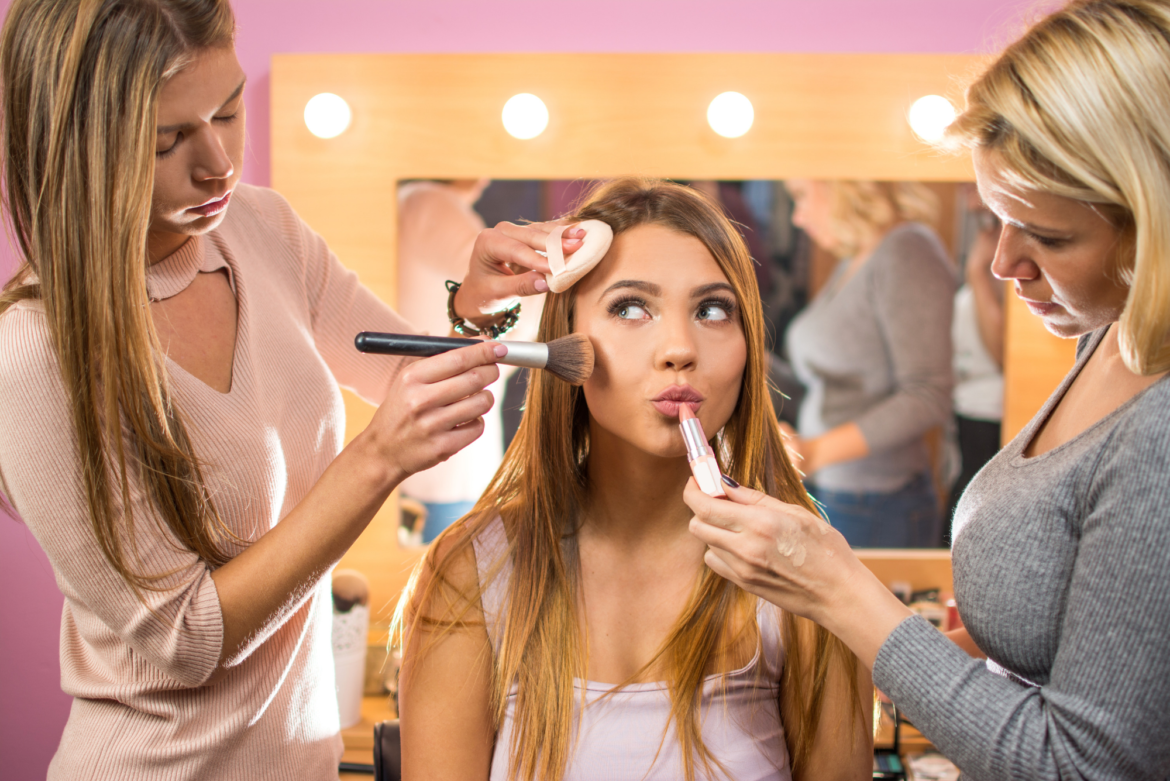When learning about the complex issue of harmful ingredients in everyday products, it’s natural to want to lean on a tool or tools to help cut through the clutter in order to make sound purchasing decisions.
But beware, as most come with bias and limitations.
Perhaps the most widely used resource is the EWG Skin Deep Database, and this blog will shed light and understanding on its limitations.
WHAT IS THE ENVIRONMENTAL WORKING GROUP (EWG)?
The Environmental Working Group (EWG) is an activist group specializing in research and advocacy in the areas of agricultural subsidies, toxic chemicals, drinking water pollutants and corporate accountability. Since its inception in 1993, EWG has provided research geared towards reforming agriculture policy, advancing conservation techniques and environmental protection.
More recently, EWG has become widely regarded as a pioneer in raising awareness regarding the presence of harmful chemicals in personal care products, and has done some good work in this regard.
In 2004, EWG launched its Skin Deep database to inform people of what’s in their personal care products. The database’s first release rated 7,500 products and almost 7,000 ingredients. Today, Skin Deep rates 88,475 products and at least 11,500 ingredients, from more than 3,000 brands. EWG also boasts 2,148 “verified” products, which I will discuss later in this blog.
EWG also claims to have “the best available information about the safety of personal care ingredients,” and fully discloses an intricate web of logic they use to calculate ingredient and product scores,[1] both of which are assigned a number between 0-10, with 10 being the highest hazard. While I applaud EWG’s transparency, I feel there are notable flaws in their interpretation of the data, for both the ingredient and the product rankings. Allow me to explain …
Download Sharon's FREE Label Reading Guide
INGREDIENT RANKINGS
Lack of data = safety? Information about individual ingredients is drawn from an extensive pool of sources, which is great. However, ingredients with no available safety data are assigned a score of 0, which is very much aligned with Corporate America’s philosophy of “let the buyer beware.” My qualm with this approach is that it leaves us – the consumer – to unwittingly be guinea pigs in a real-world trial with no control group or media coverage.
Contamination concerns buried. A large number of ingredients are derived from petrochemicals. Based on how they’re processed, some carry a concern of contamination with known or suspected carcinogens. For example, Sodium Laureth Sulfate (SLES), which was designed to be a more gentle alternative to Sodium Lauryl Sulfate (SLS), is known to be contaminated with Ethylene Oxide and 1,4-Dioxane, both of which are known carcinogens. However, EWG ranks SLES as a 3. On EWG’s SLES page, it’s very easy to miss that this chemical has contamination concerns, but if you scroll down past some white space, you can expand the Contamination Concerns section, where you will see the names of these carcinogens. They don’t look like hyperlinks, but they are, and if you click on them, you will see that they rank as a 10, which you can see on this progression of screen shots:

Progression of screen shots showing how deeply hidden carcinogenic contaminants are
“You’re so sensitive.” EWG says that they don’t account for individual susceptibility, but they do account for allergies and related sensitivities. For example, Lemon Essential Oil ranks a 4-6 for potential irritation. While no one should ever put lemon essential oil directly on their skin, most people recognize that irritation caused by a natural ingredient like lemon oil is hardly an indication that lemon isn’t safe to use. But even if you disagree with me about that … it does beg the question, why does EWG explicitly state that they don’t account for individual susceptibility, when clearly, they do?
EWG PRODUCT RANKINGS
How Many Tacks Does It Take To Say Ouch? What bothers me most about EWG is that product scores are not driven by the most harmful ingredient. After all, if you’re sitting on 3 thumbtacks and you take 2 away, the one you’re sitting on still hurts!
Pantene Moisturizing Shampoo is a perfect example. EWG gives this product a score of 3 (lowest end of the moderate hazard range), but it contains a troubling preservative, Methylisothiazolinone. The ingredient ranking of this hard-to-pronounce chemical is 7 because it’s a sensitizer and a skin toxicant. Sensitizers are different from allergens, in that they can cause a strong reaction to develop after a long period of using it with no problem, making it tricky to determine what caused the reaction. In fact, the American Dermatitis Society names Methylisothiazolinone Contact Allergen of the Year in 2013. If you Google “Methylisothiazolinone skin reaction” and then click Images, you’ll understand why!
KEEPING UP WITH PRODUCT FORMULA CHANGES
The More Things Change … Perhaps most concerning is that EWG Skin Deep is not in direct partnership with most of the brands in its database. Companies can and do make formula changes all the time. The most up to date ingredient statements will be on product bottles themselves, but sadly we tend to trust what’s on our computer and smartphone screens more so that what’s right in front of us. And who has time to read every label while shopping?
If you click the link to see Skin Deep methodology (and I wonder how many curious consumers even think to do this), you’ll find that product changes less than 3 years old may not be reflected. In a nod to manufacturers’ right to change ingredients, EWG marks any products that have been in the database for longer than 3 years as “old formulation.” Yet product formulations can change at any time, lulling consumers who use Skin Deep into a false sense of security. In my opinion, EWG ought to add a disclaimer to every product page so that users are aware that ingredient information could already be outdated.
EWG VERIFIEDTM PROGRAM
And then there is EWG Verified™, a “pay to play” program created several years ago. More than 2100+ products carry this seal, but what does it mean? Is this a mark you can trust? This is what EWG declares on their website:
A mark you can trust: With thousands of consumer products on the market, it can be overwhelming to know which ones are safer and healthier for your family. The EWG VERIFIED™ mark does the work for you.[2] ….. When you see the EWG VERIFIED™ mark on a product, you will know that the product meets EWG’s strictest criteria for transparency and health. [3]
Standards for the mark include:
- Avoids EWG’s ingredients of concern – Products cannot contain any ingredients on EWG’s “Unacceptable” list, meaning ingredients with health, ecotoxicity and/or contamination concerns (a 270 page document)
- Must meet EWG’s standards for ingredient disclosure on the label, and provide full transparency including fragrance ingredients
- Product manufacturers must develop and follow current good manufacturing practices to further ensure the safety of their products
Ongoing costs to the manufactures aren’t disclosed on EWG’s website, but they do provide this information:
Costs for participation vary widely, generally ranging from hundreds of dollars to thousands of dollars per year, based on factors such as company size and stage of development, pricing structure options, number and sales of EWG VERIFIED products, and related considerations. Typical fees include an application fee, evaluation fee and trademark usage royalty or annual flat fee.[4]
I’m a skeptic at heart, and having worked in Corporate Marketing for 7 years leads me to believe that EWG accepting funding likely contributes to at least SOME bias. And having been in the toxin-free, organic products space for some time now, I noticed that some ingredient scores quietly started changing after EWG launched their EWG VerifiedTM program. I wish I had taken screen shots at the time, but from memory, it was scores for Sodium Benzoate and Phenoxyethanol that dropped at least 2 points on the 10-pont hazard scale.
Because the human brain naturally looks for shortcuts, it’s important to note that EWG VerifiedTM is a seal that applies at the individual product label, so it doesn’t indicate safety for all products in a product line or for an entire company.
Not to mention … LACK of the seal doesn’t mean a product isn’t safe. Makers of safe products might not be aware of the program, or have the finances to support, or the desire to seek out a third party certification.
FINAL THOUGHTS ABOUT THE EWG SKIN DEEP DATABASE
In closing, while Skin Deep has significant limitations and EWG VerifiedTM is a pay-to-play program, we don’t have to throw the baby out with the bathwater. Skin Deep is a decent resource for ingredient information and is most useful if you know what to look for. Hopefully this blog empowered you in that regard! EWG also puts out great qualitative research and effectively raises awareness of environmental concerns, but they’re not the best source for finding the safest products.
When I first started researching the products I brought into my home, I felt really alone. My family thought I was crazy, and most of my friends couldn’t relate. That’s why I created a virtual community, the Toxic Free Friends Facebook group. In this group, I share many of my lifestyle choices, tips and information to help others on their toxin-free journey, and my favorite recommendations for personal and home care products. I’d love for you to join us!
[1] https://www.ewg.org/skindeep/learn_more/about/
[2] https://www.ewg.org/skindeep/ewgverified/

